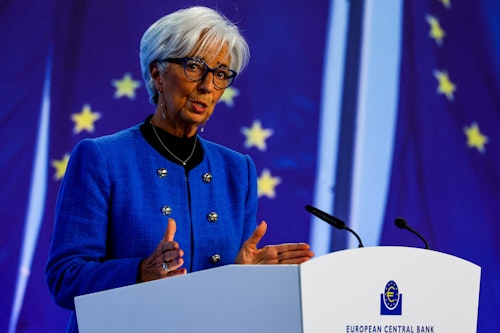On January 30, 2025, the European Central Bank (ECB) held its scheduled monetary policy meeting in Frankfurt. The Governing Council assessed the current economic conditions and deliberated on appropriate policy measures to achieve its mandate of price stability.
ECB Policy Meeting Interest Rate Decision
In response to persistent economic challenges, the ECB decided to lower its key interest rates by 25 basis points. Consequently, the deposit facility rate decreased from 3.00% to 2.75%, the main refinancing operations rate to 2.90%, and the marginal lending facility rate to 3.15%. These changes will take effect on February 5, 2025.
Rationale Behind the Decision
The ECB’s decision is rooted in its updated assessment of the inflation outlook and the dynamics of underlying inflation. Recent data indicates that the disinflation process is progressing as anticipated, with inflation expected to return to the ECB’s 2% medium-term target later this year. While domestic inflation remains elevated, primarily due to delayed adjustments in wages and prices in certain sectors, wage growth is moderating, and corporate profits are absorbing some inflationary pressures.
Economic Context
The Eurozone economy continues to face headwinds, including weak growth and uncertainties stemming from global trade tensions. Despite recent rate cuts making new borrowing less expensive, financing conditions remain tight due to the lingering effects of previous rate hikes. The ECB anticipates that rising real incomes and the gradual easing of restrictive monetary policy will support a pickup in demand over time.
Forward Guidance
The Governing Council emphasized its commitment to a data-dependent and meeting-by-meeting approach in determining the appropriate monetary policy stance. Future interest rate decisions will be based on assessments of the inflation outlook, incoming economic and financial data, underlying inflation dynamics, and the strength of monetary policy transmission. The ECB is not pre-committing to a specific rate path, allowing flexibility to respond to evolving economic conditions.
Divergence in Global Monetary Policies
The ECB’s recent rate cut contrasts with the monetary policy stance of the U.S. Federal Reserve, which has paused its rate cuts due to robust economic performance. This divergence reflects differing economic conditions across major economies, with the Eurozone grappling with weak growth while the U.S. experiences strength. Such disparities have implications for exchange rates and global trade dynamics.
Debate on the Neutral Rate
Recent discussions within the ECB have focused on the concept of the ‘neutral’ interest rate—the rate that neither stimulates nor restricts economic activity. A recent ECB paper estimates the neutral deposit rate to be between 1.75% and 2.25%, suggesting that current rates remain above this level. However, ECB officials caution against over-reliance on this theoretical concept, emphasizing the need for flexibility and consideration of a range of indicators in policy decisions.
Conclusion
The ECB’s decision to cut interest rates reflects its ongoing efforts to support economic recovery. It also reflects steer inflation towards its medium-term target. The central bank remains vigilant, ready to adjust all of its instruments within its mandate to ensure that inflation stabilizes sustainably at 2%. It also preserve the smooth functioning of monetary policy transmission.





